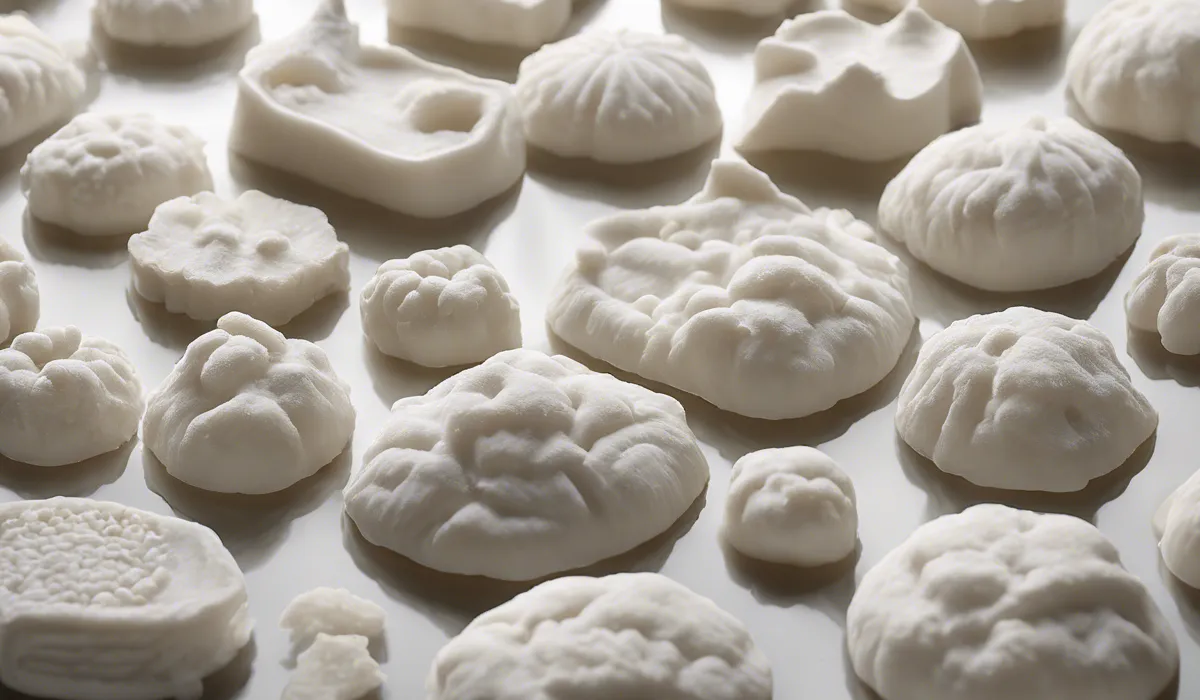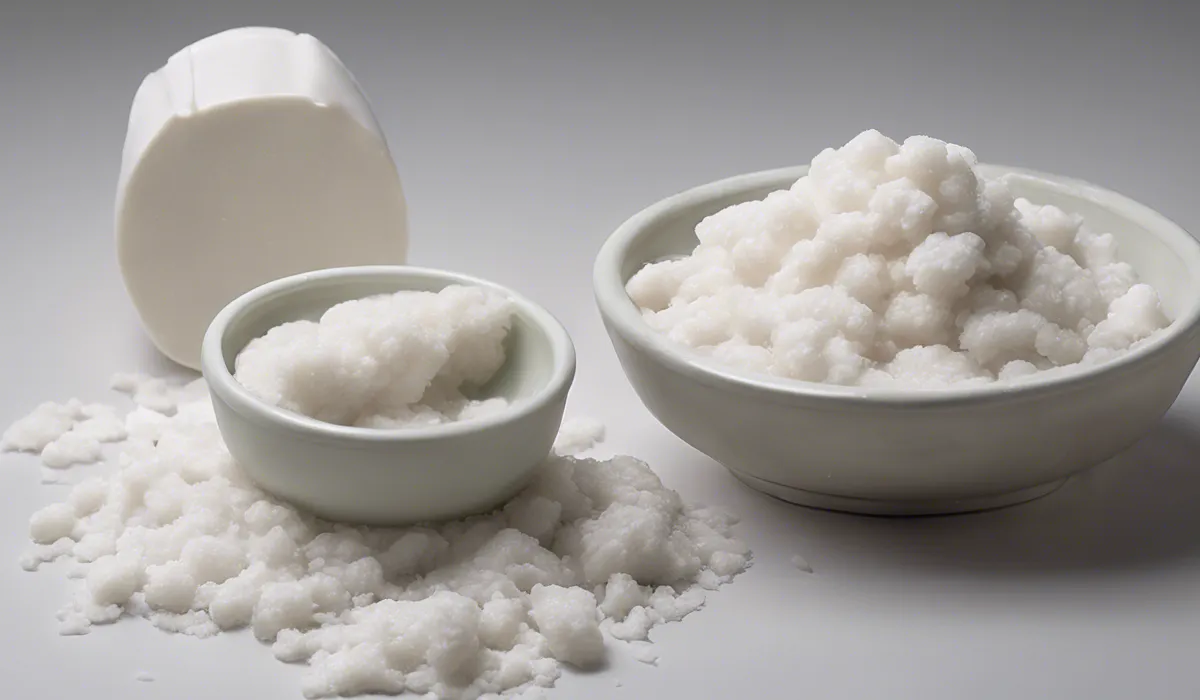Koji mold, Aspergillus oryzae, is a fungus used in East Asian cuisine to ferment foods like soy sauce, miso, and sake. It breaks down starches and proteins into sugars and amino acids, adding flavor and aiding in preservation.
Understanding Koji Mold? Definition and Characteristics

What Exactly Is Koji Mold?
Koji mold, scientifically known as Aspergillus oryzae, is a type of fungus that plays a crucial role in the fermentation process of various East Asian foods.
It has been used for centuries to transform raw ingredients into flavorful and nutritious foods.
Koji mold is not just any mold; it is a specific strain that has been cultivated for its ability to produce enzymes necessary for breaking down starches and proteins into simpler compounds.
The Natural Habitat and Cultivation of Koji Mold
Koji mold thrives in warm and humid environments, which are typical conditions found in parts of Asia where it originated.
In nature, it can be found on various grains like rice or soybeans, which are its primary substrates.
To cultivate koji mold, steamed rice or soybeans are inoculated with spores and kept in a controlled environment that fosters its growth.
This process results in a product called “koji” which is a mixture of the grain and the mold, ready to be used in fermentation.
Distinct Features of Koji Mold
Koji mold is distinct from other molds due to its white coloration, its powdery texture, and its ability to produce a sweet aroma.
Unlike harmful molds that can produce toxins, Aspergillus oryzae is considered safe for consumption.
Its enzymes are particularly efficient at breaking down complex molecules, which is a key feature that sets it apart from other molds and makes it invaluable in food production.
The Role of Koji Mold in Fermentation
Fermentation is a metabolic process where microorganisms like koji mold convert carbohydrates into alcohol, acids, or gases.
Koji mold is the powerhouse behind this transformation. By producing a variety of enzymes, it breaks down the starches in grains into sugars, which can then be fermented by yeasts and bacteria.
This process not only enhances the flavor profile of foods but also increases their shelf life and nutritional value.
The Culinary and Industrial Applications of Koji Mold

Traditional East Asian Culinary Practices
In East Asian cuisine, koji mold has been a cornerstone for centuries. It is the secret behind the umami flavor and the distinct tastes found in traditional foods like soy sauce and miso.
These foods are not only common ingredients in Asian dishes but have also gained worldwide popularity for their unique flavors and health benefits.
Production of Fermented Foods
Koji mold is pivotal in the production of a variety of fermented foods. Soy sauce is made by fermenting a mixture of soybeans, wheat, and koji mold, while miso results from fermenting soybeans with koji.
Sake, the famous Japanese rice wine, is produced by fermenting rice that has been inoculated with koji mold.
These are just a few examples of how koji mold is at the heart of some of the most cherished fermented foods.
Contemporary Culinary Innovations
Chefs around the world are now using koji to innovate and create new flavors. Koji is being used to cure meats, make dairy products like cheese, and even to ferment vegetables.
This versatility in use is expanding the boundaries of culinary art and opening up a new world of flavors to explore.
Enzyme Production for Industrial Uses
Beyond the kitchen, koji mold is used in various industries for its enzyme production capabilities.
These enzymes have applications in pharmaceuticals, food processing, and even in biofuel production.
The ability of koji enzymes to break down complex molecules is invaluable, making koji mold a critical resource in many sectors.
Health and Nutritional Aspects of Koji Mold

Nutritional Benefits of Fermented Foods
Foods fermented with koji mold are not only tasty but also packed with nutrients.
The fermentation process increases the bioavailability of minerals, enhances protein quality, and can lead to the development of various vitamins.
This makes koji-fermented foods a nutritious addition to any diet.
Probiotic Properties and Gut Health
Some koji-fermented foods contain probiotics, which are beneficial bacteria that can improve gut health.
These probiotics help balance the gut microbiome, aiding in digestion and potentially strengthening the immune system.
The probiotic content is one of the reasons why these foods are considered as healthy options.
Allergenic and Safety Considerations
While koji mold is generally recognized as safe, there are instances where individuals may have allergies to mold or fermented products.
It is essential to be aware of one’s sensitivities and consult with a healthcare provider if any adverse reactions occur.
However, such cases are relatively rare, and koji mold remains a staple in many diets.
Ongoing Health Impact Research
Research into koji mold and its fermented products is ongoing. Scientists are exploring the various health benefits, including potential anti-inflammatory properties and the role they may play in reducing the risk of chronic diseases.
As the scientific community delves deeper, the health impacts of koji-derived products continue to show promise.
FAQs About Koji Mold
What is koji mold used for in cooking?
Koji mold is used in cooking to ferment foods like soy sauce, miso, and sake, enhancing flavors and aiding in food preservation.
How does koji mold contribute to the flavor of fermented foods?
Koji mold breaks down starches and proteins into sugars and amino acids, adding complex flavors to the fermented foods it is used with.
Can koji mold be used with non-Asian cuisine?
Yes, while traditionally used in East Asian cuisine, koji mold can be applied to a variety of foods and cuisines to create unique flavors and textures.
Is koji mold safe to consume?
Yes, koji mold, specifically Aspergillus oryzae, is safe to consume and has been used in food production for centuries.
What nutritional benefits does koji mold add to food?
Koji mold can enhance the nutritional profile of food by increasing the availability of amino acids, vitamins, and potentially aiding in digestion due to its fermentative properties.
Final Thoughts
Koji mold, known scientifically as Aspergillus oryzae, plays a crucial role in the fermentation process of East Asian foods such as soy sauce, miso, and sake.
It enzymatically converts starches and proteins into flavor-enhancing sugars and amino acids, which also contribute to the preservation of these traditional food items.
